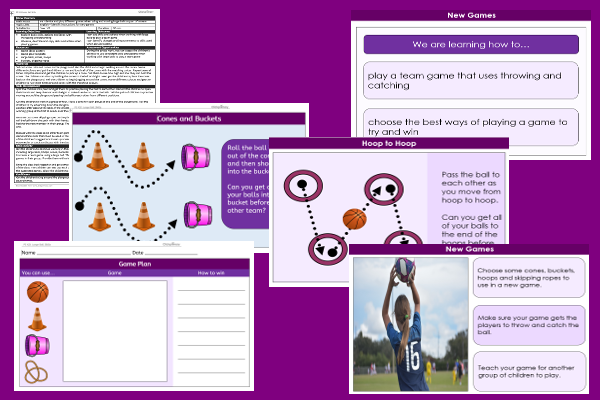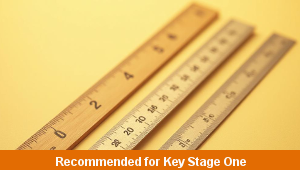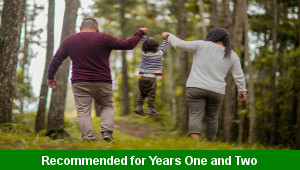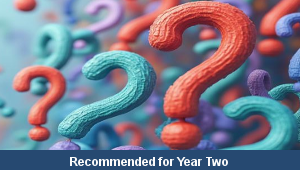Lesson Five – New Games

This physical education teaching pack for Key Stage One gets the children to devise and play a range of different small sided games when using and moving large balls as part of a team to try and win each game.
The class can create and play some of their own games that involve passing and shooting skills and moving into spaces to achieve specific objectives such as scoring goals and hitting targets.
Download this teaching pack including a lesson plan, classroom activities and an interactive presentation to devise and play a range of different small sided games when using and moving large balls as part of a team to try and win each game
Activities in this teaching pack include display posters to describe different ways of using and moving large balls during a team game and a template to record some ideas for new team games using large balls for passing, moving and hitting targets.
The interactive presentation gets the children to explore how to devise and play a range of different games when using and moving large balls as part of a team.
This lesson is part of a physical education scheme of work to get the children to develop, practise and refine a range of different skills to move, pass and target goals when playing team games using large balls. There are teaching activities for shared learning, differentiated worksheets to support independent learning and interactive presentations to introduce concepts and key skills.
-

Maths Measurement Assessment
Assess abilities in estimating, measuring and comparing a range of different measurements for length, mass and capacity
-

Family Life
Investigate and reflect on some of the special events and experiences that might happen in the life of a family
-

Final Sounds Word Guess
Practise playing some guessing and matching games to identify the spelling and meaning of words with different final sounds
-

Building Reports
Explore how to collect facts and information to work with when composing and presenting non-chronological reports about buildings that can be found in the local area
